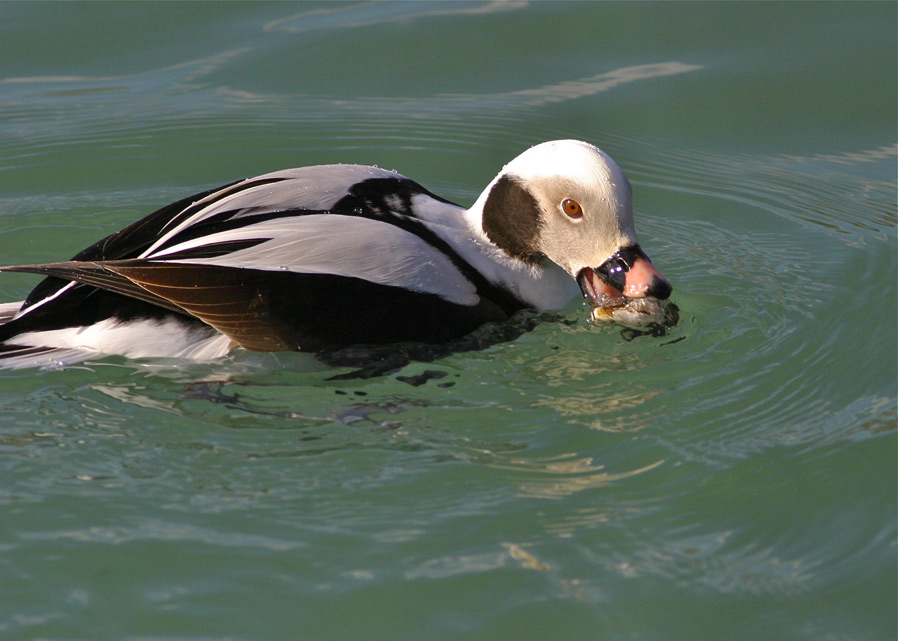A male long-tailed duck (Clangula hyemalis) surfaces with food — a zebra mussel, perhaps? — after a deep dive in the inner bay Saturday at Ashbridge’s. © BCP 2011.
There are still huge numbers of long-tailed ducks in the inner bay at Ashbridge’s Park, enjoying their winter vacation down south. South for them, at least. For the long-tails (Clangula hyemalis) are actually Arctic ducks, and it won’t be too much longer before they hit the migration trail to return to their breeding grounds in Alaska, Nunavut and the North West Territories.
Despite the dramatic two-tone paint job of the male above, he is not in his breeding plumage. This is his winter attire; when he returns to his breeding grounds up north he will have a much less dramatic appearance (more like the drab winter female), and he’ll lose the distinctive pinky-orange colouration from his beak.
I’m not sure what our fine feathered friend in the photo above has in his beak. Long-tails eat primarily mollusks, crustaceans and some small fish and, since the introduction of zebra mussels (Dreissena polymorpha) into the Great Lakes in the 1980s, have become voracious consumers of same. The population of long-tails in the Great Lakes has, in fact, risen with the explosion of these unwanted invasive invertebrates. More proof, as if any were needed, that changing one thing in an ecosystem can have profound — and unexpected — results.
One more interesting thing about these beautiful ducks. Their common name, oldsquaw, was officially changed to long-tail in 2000. There had been concern in some quarters that the word squaw could be considered offensive. Here’s what Wiki says about the name change: “The American Ornithologists’ Union (2000) stated that “political correctness” was not sufficient to change the name, but “to conform with English usage in other parts of the world”, it officially adopted the name Long-tailed Duck.”
As far as I’m concerned, this duck could be called “old sock” and I would still think he was one of the most gorgeous birds to grace our inland waterways.
© BCP 2010




2 comments